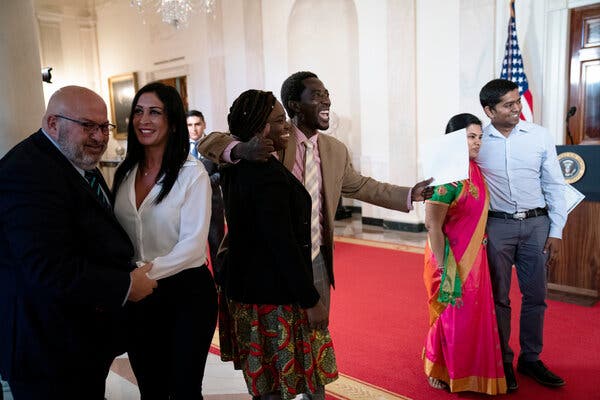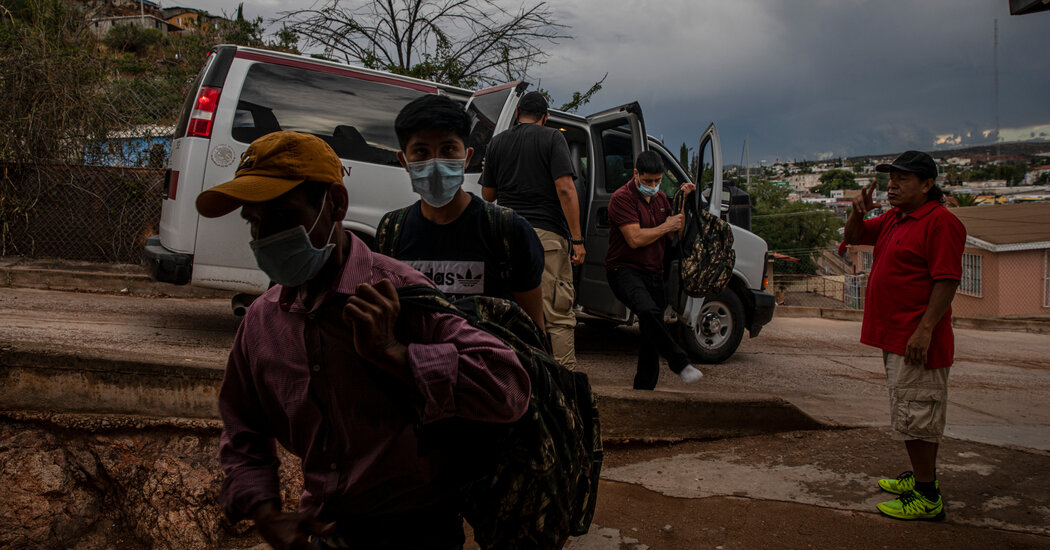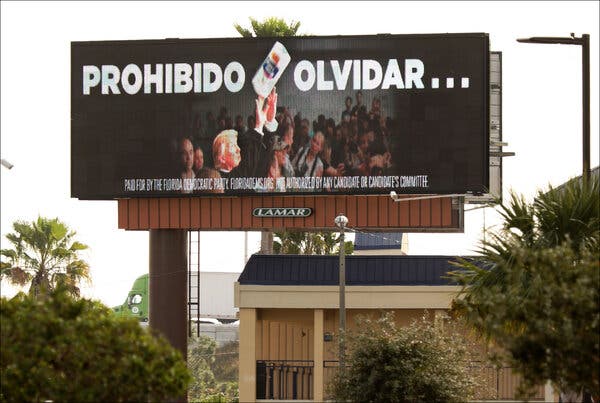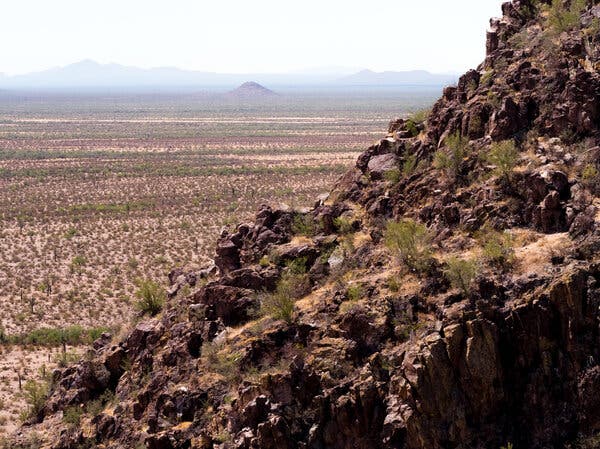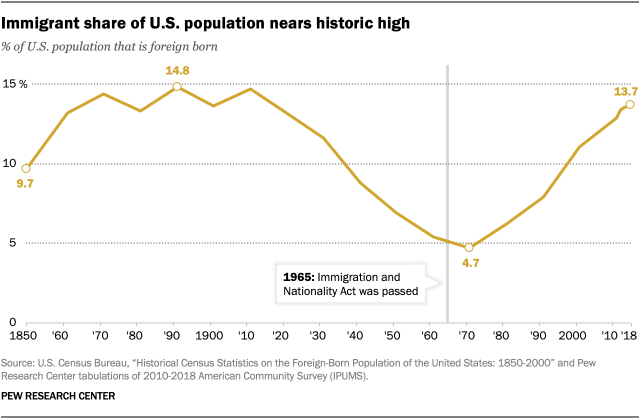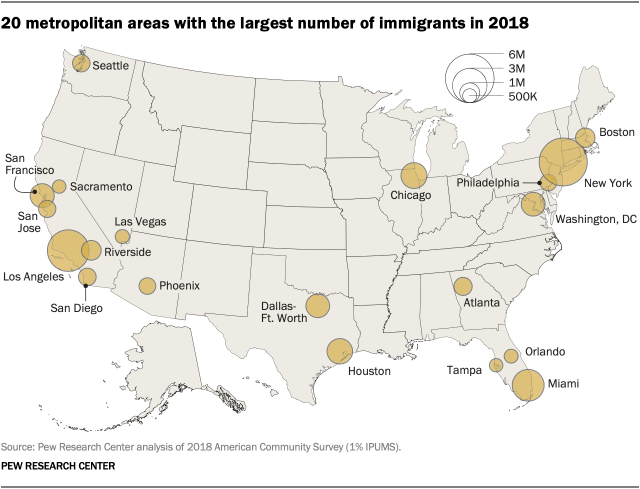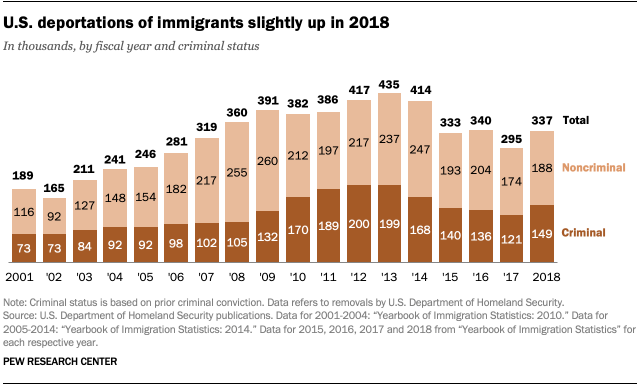Immigrants to the United States have become more educated since the Great Recession. Between 2007 and 2017, the share of recent working-age immigrants who have a four-year college degree rose from 32 percent to 45 percent. Although this trend is a positive development, policymakers should interpret it cautiously. “Educated” is not the same as “skilled”, and evidence is growing that a college degree is not as meaningful for immigrants as it is for the native-born.
Consider income. The figure bellow compares the average income of recently arrived, college-educated immigrants in their prime working years (ages 25 to 54) with their U.S.-born counterparts who have the same age and education. (“Recently arrived” means within the last 10 years of the survey year. In other words, data from 1980 covers immigrants who arrived between 1970 and 1980; data from 1990 covers immigrants who arrived between 1980 and 1990; and so on.) Because changes in the race and gender composition of the workforce could complicate the trend, only men are included in the analysis below, and the U.S-born comparison group is limited to non-Hispanic whites.
Among prime-age men with a four-year college degree, recent immigrants continue to earn less than U.S.-born white Americans.
Source: Decennial Census, 1980-2000; American Community Survey, 2010 and 2017.
The leftmost dark green bar indicates that among prime-age men with a college degree, recently-arrived immigrants in 1980 earned 35 percent less than U.S.-born whites. Moving from left to right, the dark green bars show that the income deficit declined to 25 percent by 2000. Unfortunately, the decline seems to have stalled, and the deficit remained substantial in 2017 at 24 percent. Since recent immigrants with a college degree suffer such a large income penalty, it is unlikely that they are as productive as their U.S.-born counterparts.
One reason for the deficit may be that immigrants struggle to find regular work that matches their education level — perhaps because they are unfamiliar with regulations, networking, and licensing requirements in their new country. Indeed, a recent study by the Center found that 20 percent of college-educated immigrants work in a low-skill occupation, compared to 7 percent of college-educated natives. The light green bars on the figure above show that after controlling for occupational status and time on the job, the income deficit shrank to 13 percent in 2017. A mismatch between education and occupation clearly causes some of the observed deficit.
Nevertheless, recently arrived immigrants with college degrees earn significantly less than college-educated natives even when they work the same hours in similar jobs. Why? One possibility is a lack of bargaining power. Some immigrants are in the country illegally, and others hold temporary visas that restrict their job options.
Another possibility is that college-educated immigrants are less skilled than their native counterparts. The Center published an important study last year showing that foreign-educated immigrants scored far lower on tests of literacy and numeracy than did U.S.-educated immigrants and natives. In that study’s dataset, over three-quarters of recent prime-age immigrants with a college degree earned it before coming to the United States, so it is no surprise that the immigrants analyzed here have lagging incomes. It would be interesting if the decline in the income deficit since 1980 is a result of more immigrants having U.S. degrees, but we lack the historical degree data needed to test that theory.
More research is needed, but the existing data clearly indicate that “educated” is not the same as “skilled”. College graduates are not interchangeable with each other, especially in an immigration context where acculturation affects labor market success. If the United States wishes to recruit skilled immigrants who will be highly productive upon arrival, the selection process needs to consider more than mere educational credentials.
Methodological Notes
This analysis uses the decennial Census (1980 through 2000) and the American Community Survey (2010 and 2017). The dark green bars represent the results of the following regression: log income = age_group + recent_immigrant + recent_immigrant * year. The regression is limited to people with bachelor’s degrees who are no longer in school. Ages are in five-year groupings.
Results shown by the light green bars are further limited to employed individuals, with added controls for weeks worked, usual hours worked per week, broad occupational groupings, and the Nakao-Treas occupational prestige score provided by IPUMS. The prestige score is not available for 2018, necessitating the use of 2017 as the most recent year. Average earnings could be skewed by top- and bottom-coded income data, but regressions using median earnings produced similar patterns of results. The analysis above focused only on college graduates; among individuals with advanced degrees, the immigrant income deficit in 2017 was 14 percent before controls and 9 percent after.
Surprisingly, excluding immigrants who are likely illegal appears to have little effect on the results. The Center’s method for identifying likely illegals in Census data may not be robust to such a specialized subset of immigrants, however, so this finding is only tentative.
Source: The Income Penalty for Immigrants with College Degrees
Featured Photo by Honey Yanibel Minaya Cruz on Unsplash

